Unwrapping recent MQ-9 FARP exercises in the Middle East
Utilizing Forward Arming and Refueling Points at austere airfields will be critical in future large-scale conflicts
First of all, thank you for reading my first-ever blog post! This one is probably simpler than most future posts will be, but I am still figuring out what exactly I want to do on this platform.
Earlier this month, I tweeted a short thread after I found photos of an MQ-9 Reaper remotely piloted aircraft during Forward Arming and Refuelling Point (FARP) training at ‘‘an undisclosed location within the U.S. Central Command area of responsibility’’ on DVIDS. Seeing ‘‘undisclosed location’’ always intrigues me, which is why I decided to try to find at which air base these photos were taken. As described in the thread, finding the first air base was quite effortless as the ICAO code was visible on one of the labels. It revealed that the HC-130J Combat King II aircraft took off from Al Salem Air Base, Kuwait. It took a lot longer to find the air base where the actual training was conducted. After checking every air base in Jordan twice and some major others in the region, I realised that I had made a mistake and that the training was conducted at Muwaffaq Salti Air Base in Jordan.

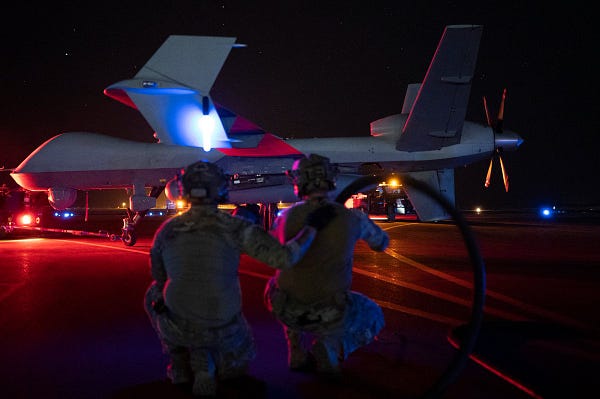
In a more recent FARP exercise, the second at the Muwaffaq Salti Air Base in just four weeks, FARP specialists from the 26th Expeditionary Rescue Squadron and ‘‘361 Expeditionary Attack Squadron Lockheed Martin Maintenance’’ refuelled, rearmed, and relaunched a combat MQ-9 Reaper flown by the 65th Special Operations Squadron. According to a press release, this was the first time such an operation took place in a combat Area of Responsibility.
The choice of Muwaffaq Salti Air Base for the two exercises is rather paradoxical considering that FARPs are designed to be, and will be in large-scale conflict, set up at austere airstrips. MQ-9 Reapers were first deployed to Muwaffaq Salti Air Base in March 2015 to support the fight against ISIS, after which the base has been extensively for MQ-9 operations. Every Google Earth satellite image of the air base shows that there have been at least two MQ-9 Reapers stationed at the air base, with the latest photo taken on March 28, 2022. On top of that, the MQ-9 Reaper used in the second of the two exercises was likely based at Muwaffaq Salti Air Base, the place where the exercise was held. While the air base definitely is not an austere airfield for the MQ-9, it is a good place to train FARP procedures as all the supporting equipment is already there if something goes wrong.
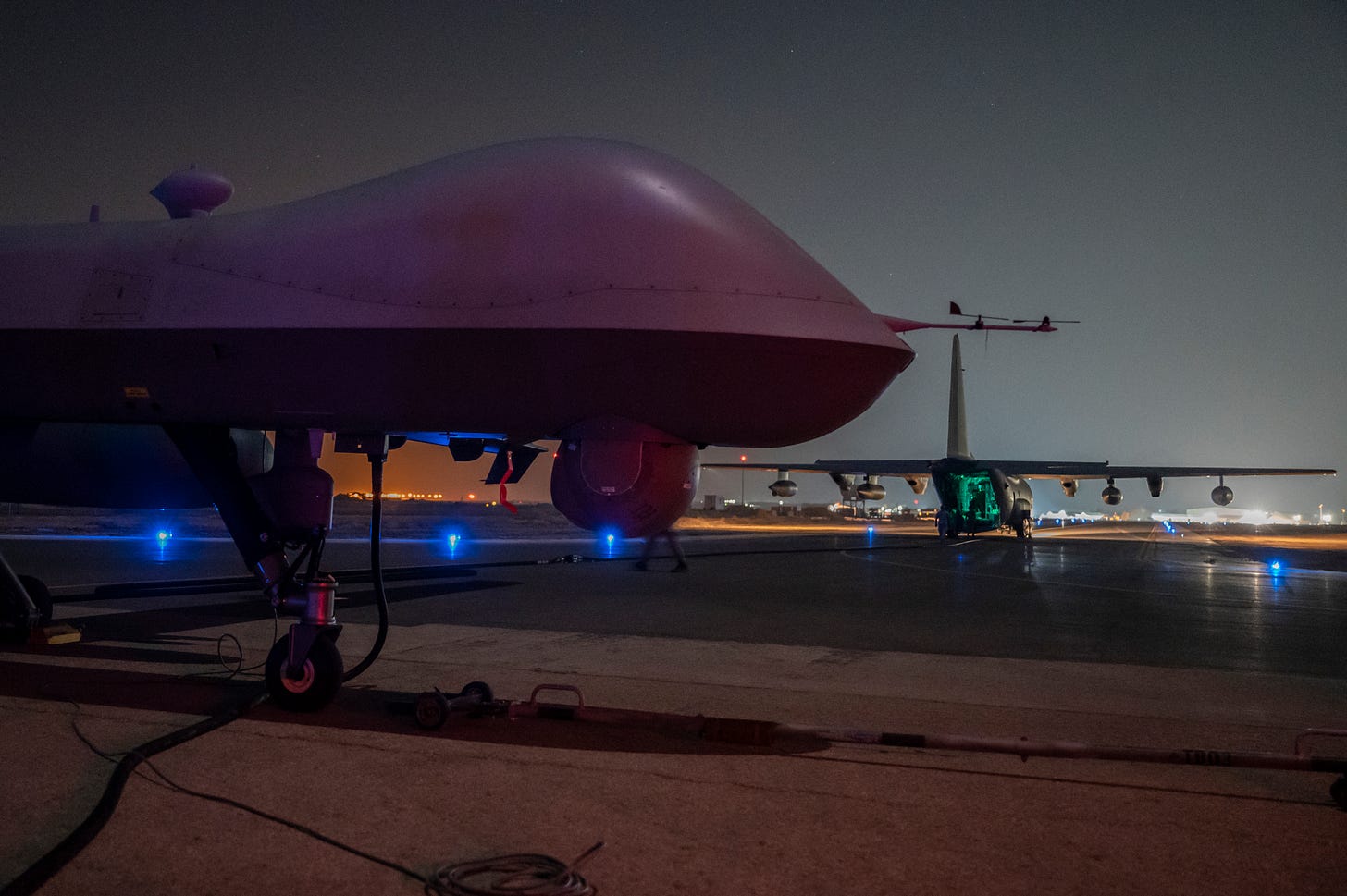
The two exercises practised FARP operations with an MQ-9 Reaper at a simulated austere airfield. These operations are enabled by a system that General Atomics developing a system that allows personnel to launch and recover MQ-9 Reaper via satellite, which was demonstrated by the company for the first time in 2017. Before this system was implemented, the U.S. Air Force had to fly the Reapers using a ‘‘remote-split’’ method. The pilots and sensor operators were able to conduct the missions remotely via satellite, but recovery personnel on the ground had to use a line-of-sight radio link to launch and recover the aircraft. And before an MQ-9 Reaper could land at an airfield, recovery personnel on the ground had to electronically mark reference points on runways using an actual Reaper. The capability to operate MQ-9 Reapers and other unmanned assets from airfields without supporting equipment opens the door to new operational concepts and is a key element of the ACE strategy. In a large-scale conflict, especially one against (near-)peer adversaries, established air bases will be a primary target for enemy attacks. Distributing aircraft to a network of smaller airfields increases the survivability of these assets without needing significantly more resources or personnel. The effects of this concept are perfectly described in a The War Zone article about a similar exercise in 2019: ‘‘this could allow the U.S. military to conduct more distributed strikes, forcing opponents to spread resources thinly across a broader area in response, potentially disrupting their overall defensive strategy and opening them up to larger operations pin-pointed against particularly vulnerable areas.’’
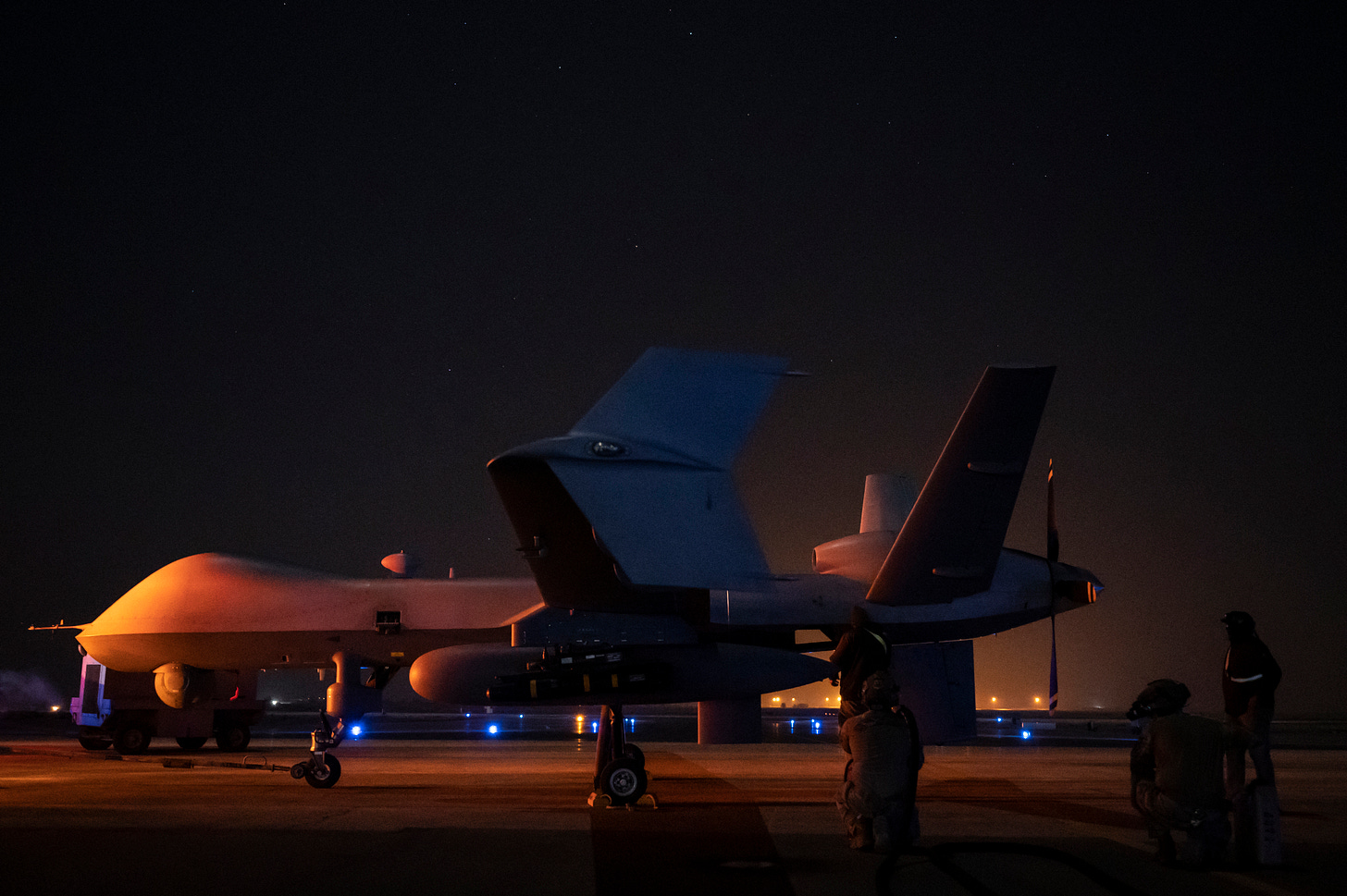
The ability to operate MQ-9 Reapers from Forward Arming and Refuelling Points extends the range of MQ-9 Reapers as the aircraft are not bound to established airbases. In addition, FARP operations could reduce the turnaround time as the Reapers can fly to nearby austere airfields instead of the long trip back to an established air base. In case of an emergency, the Reapers are able to divert to more airfields, as the aircraft do not require traditional launch and recovery infrastructure or personnel and can land at airfields where the MQ-9 has not been before. To deploy MQ-9 Reapers to new regions, the U.S. Air Force can employ the FARP concept to expand the number of possible airfields and do so more quickly.
While the MQ-9 Reaper has had these capabilities for years now, the recent FARP exercises in Jordan showcase that the U.S. Air Force continues to fine-tune the concept as part of their shifting focus to a (near-)peer conflict. I hope this post also shows that there is a bigger picture behind nearly every photo or video that is published on DVIDS and/or shared on my Twitter account.
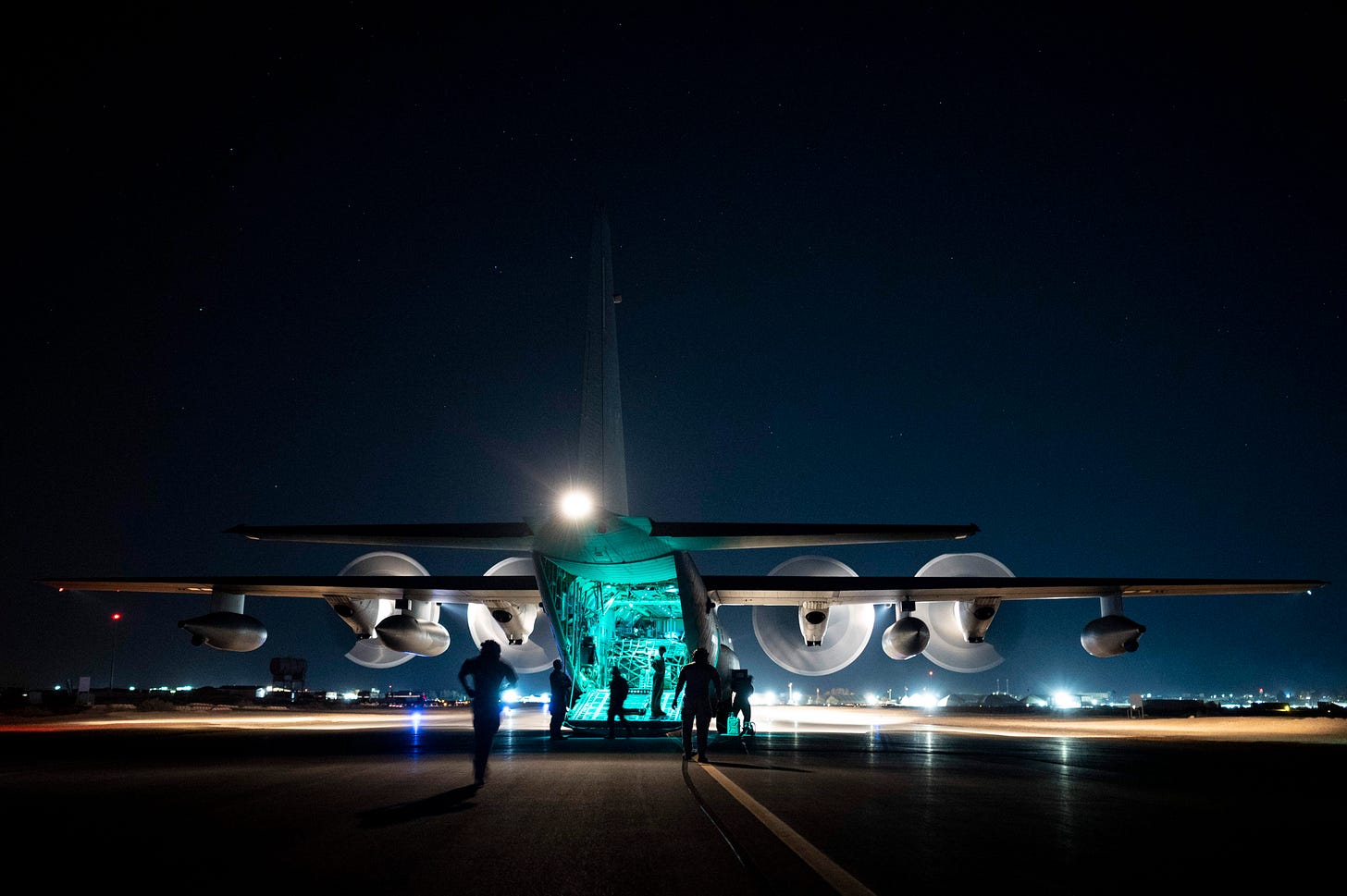
The HC-130J Combat King II
Both exercises at Muwaffaq Salti Air Base utilised the same aircraft: an HC-130J Combat King II (15-5827 // AE5C9A) assigned to the 211th Rescue Squadron of the Alaska Air National Guard. The HC-130J is a specialised version of the C-130J designed for airdrop, helicopter air-to-air refuelling, and recovery operations in contested environments. To accomplish these missions, the aircraft has improved satellite and data-burst communication suites, as well as upgraded navigation systems. The HC-130J Combat King II is equipped with advanced threat detection and self-defence measures for missions in contested environments. For threat detection, the aircraft is equipped with the AN/AAR-47(V)2 missile warning system, AN/ALR-56M radar warning receivers and Large Aircraft Infrared Countermeasure (LAIRCM) system (see the photo gallery at the end for more details). The LAIRCM system also serves as a self-defence system and is supplemented by chaff and flare dispensers. Under the nose of the aircraft, the AN/AAS-54 Electro-Optical/Infrared sensor pod houses a daylight and low-light TV camera, an infrared sensor, a laser range finder, and a laser designator.
The HC-130J Combat King II is capable of refuelling helicopters and tilt-rotor aircraft and being refuelled in flight by boom-equipped tanker aircraft. The HC-130J can conduct aerial refuelling of helicopters and tilt-rotor aircraft at night, with blacked-out communication and with up to two simultaneous helicopters. To conduct these operations, the HC-130J is modified with two refuelling pods on its underwing pylons and has the capability to fly with additional fuel tanks in the cargo bay. Specialised C-130 variants such as the HC-130J Combat King II are regularly seen in photos of FARP operations, but other aircraft conducted FARP operations with MQ-9 drones as well. In August 2022, for example, an MQ-9 Reaper was refuelled by a U.S. Marine Corps MV-22B Osprey, which was ‘‘the first time it has been refuelled by a joint asset and only the second time it has received fuel from another aircraft.’’
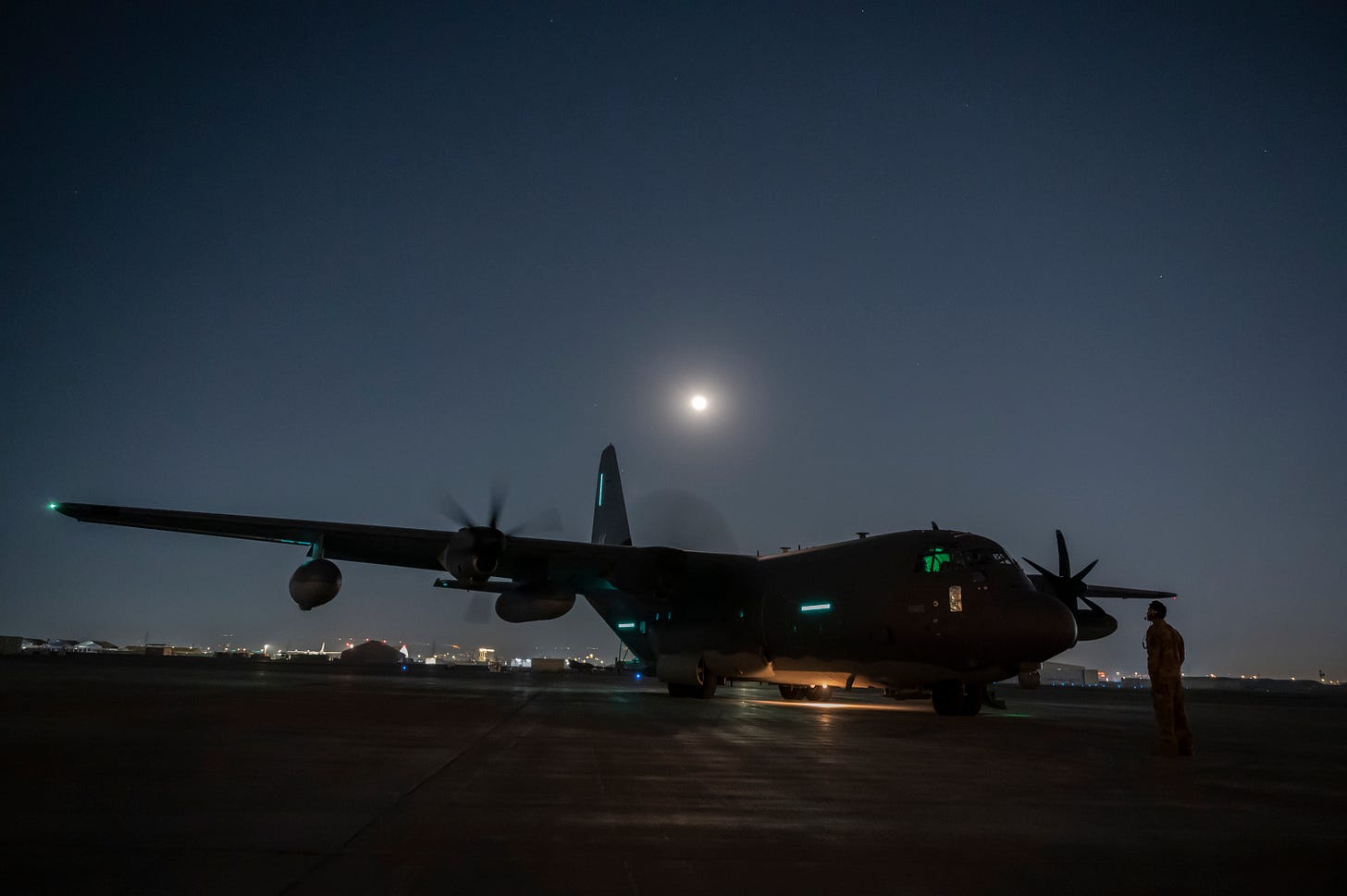
The MQ-9 Reaper
During the two exercises, an HC-130J Combat King II aircraft provided the fuel and equipment to refuel and rearm the MQ-9 Reaper on the tarmac of Muwaffaq Salti Air Base. The remotely piloted aircraft’s primary mission is to serve as an intelligence, surveillance, and reconnaissance platform but is also capable to conduct close air support and precision strike missions. The MQ-9 Reaper has a wingspan of approximately 20 meters and is powered by one Honeywell TPE331-10 turboprop, enabling an endurance of 30 hours (23 hours with a full weapons load). The unmanned aircraft are equipped with a multi-spectral targeting system, which houses an infrared sensor, a colour/monochrome daylight TV camera, an image-intensified camera and a laser rangefinder, designator, and illuminator.
Photos of the combat MQ-9 Reaper during the second FARP exercise at Muwaffaq Salti Air Base show it was flying with two live AGM-114 Hellfire missiles as well as an external fuel tank underneath its left wing. The Reaper, which was flown by 361st Expeditionary Attack Squadron and likely assigned to the 27th Special Operations Wing, was equipped with an unspecified blade antenna underneath its fuselage and a pod underneath its right wing (see the photo gallery at the end for more details). Sadly, I was not able to identify the pod because only the left wing is visible in the published photos.
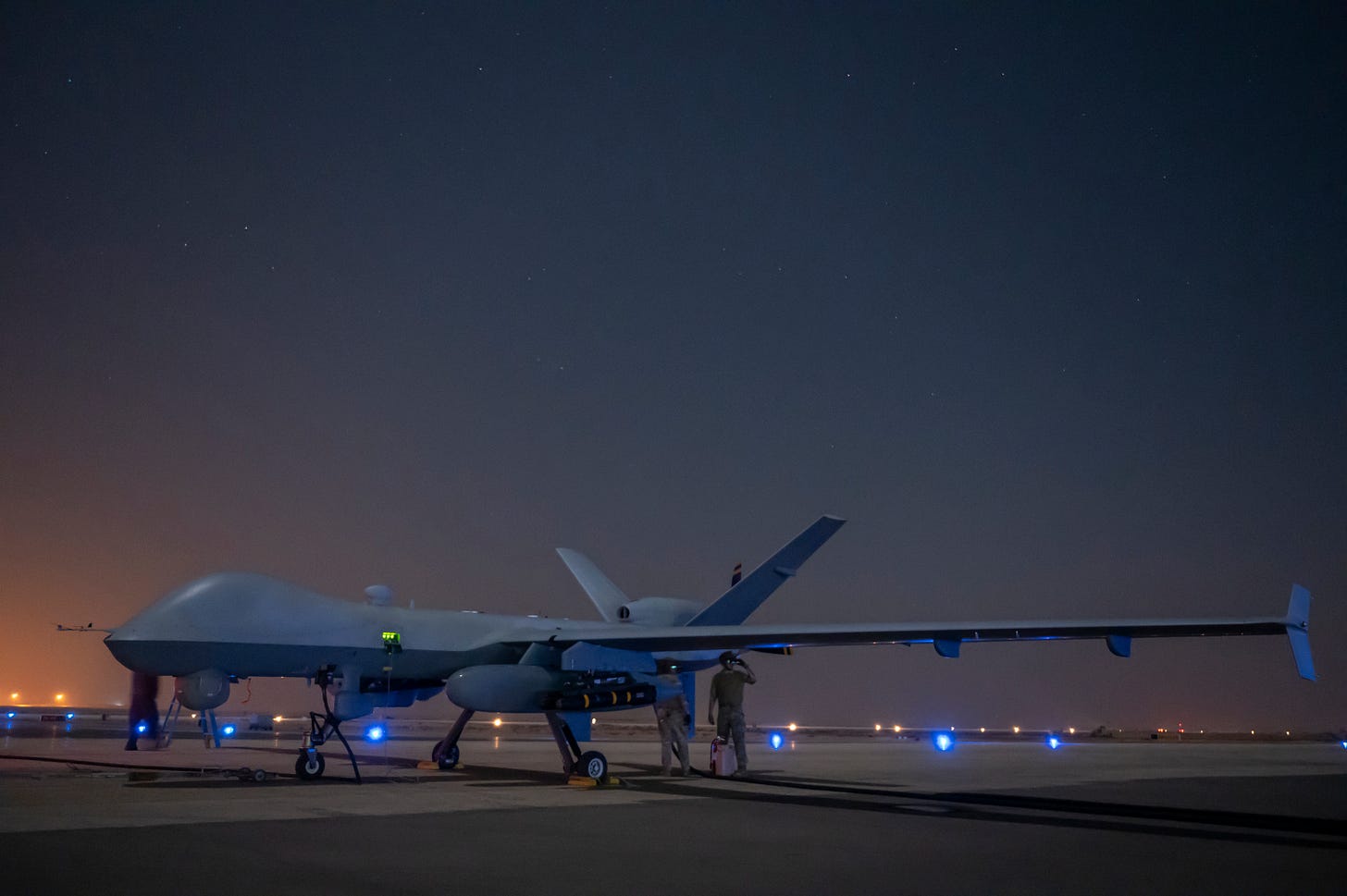
Thank you
A big thanks to Amelia for checking some details of the MQ-9 Reaper and Gerjon for proofreading this post, and thank you for reading my first post on Substack. As always, feel free to reach out with your thoughts, questions and/or suggestions for future posts.
UPDATE: Since publishing this post, the U.S. Air Forces Central released photos of the HC-130J Combat King II (15-5827) during FARP operations with an F-15E Strike Eagle, a U-28 Draco intelligence, surveillance and reconnaissance aircraft, and an AC-130U Spooky gunship. Additionally, AFCENT released photos of the HC-130J Combat King II conducting helicopter air-to-air refuelling with HH-60G Pave Hawk combat rescue helicopters and with MH-47G Chinook special operations helicopters.

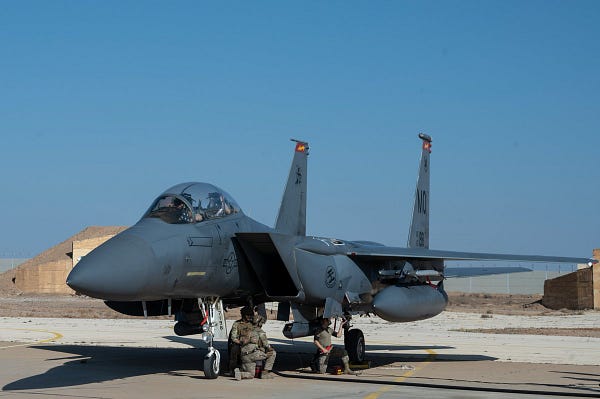
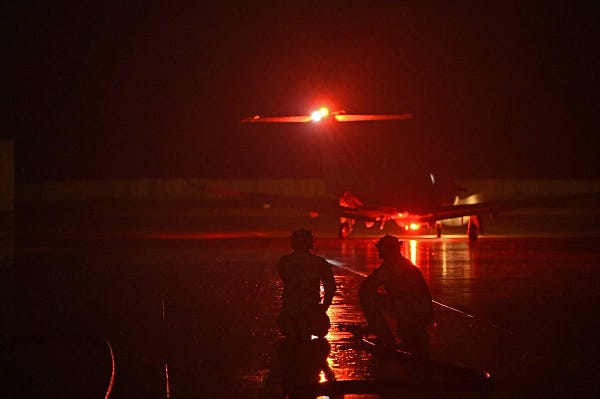
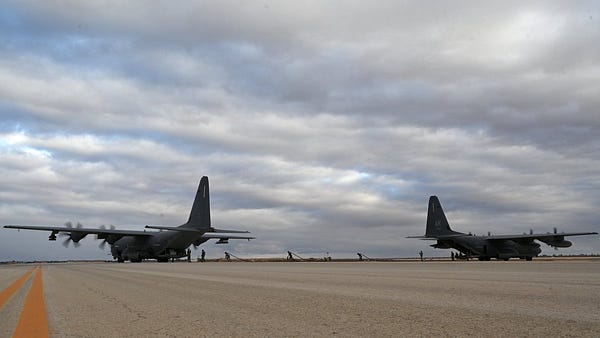

Photo Gallery
Cropped photos taken during the exercises of the HC-130J Combat King II and the MQ-9 Reaper to highlight some details.
Photo 1: sensors connected to the LAIRCM system (left) and the AN/AAS-54 EO/IR sensor pod (right)
Photo 2: the AN/AAR-47(V)2 missile warning system (left) and the AN/ALR-56M radar warning receiver (right)
Photo 3: close-up of the blade antenna in front of the vertical stabilizer
Photo 4: close-up of the large pod underneath the right wing (behind the fuselage)
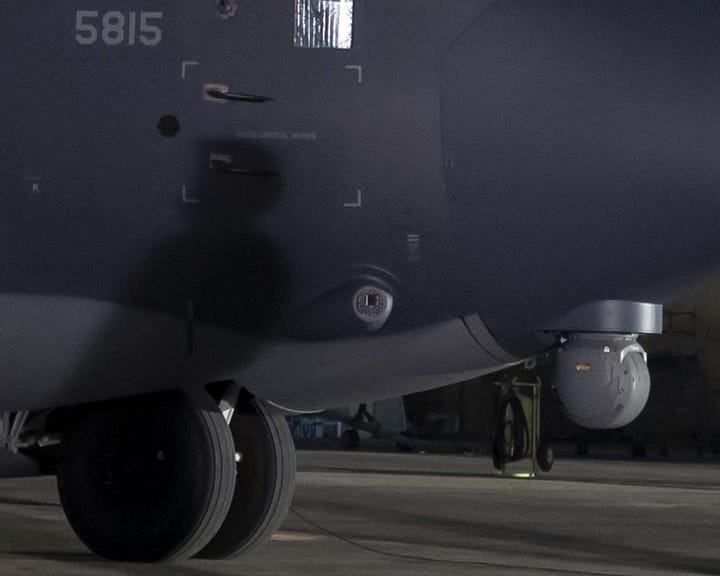
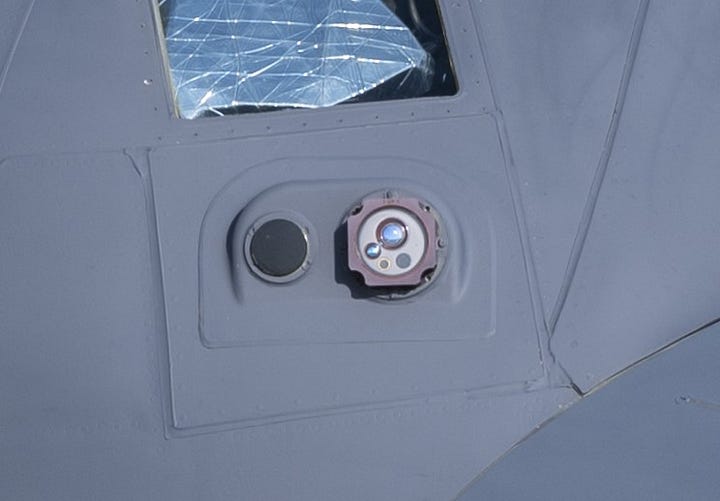
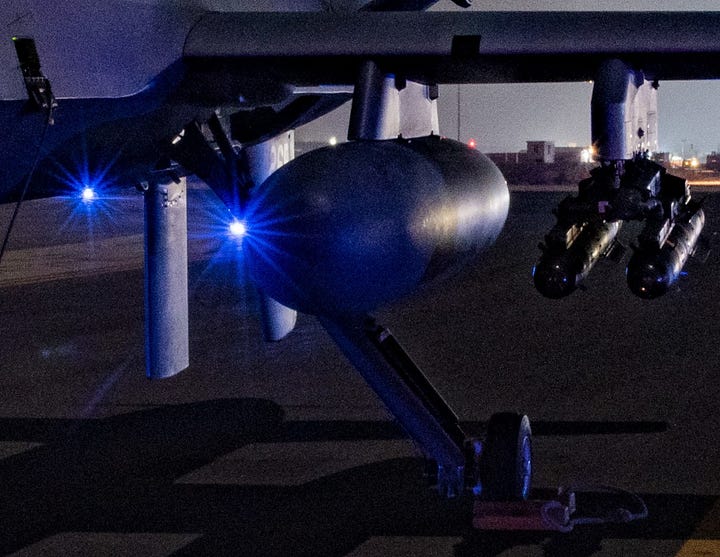
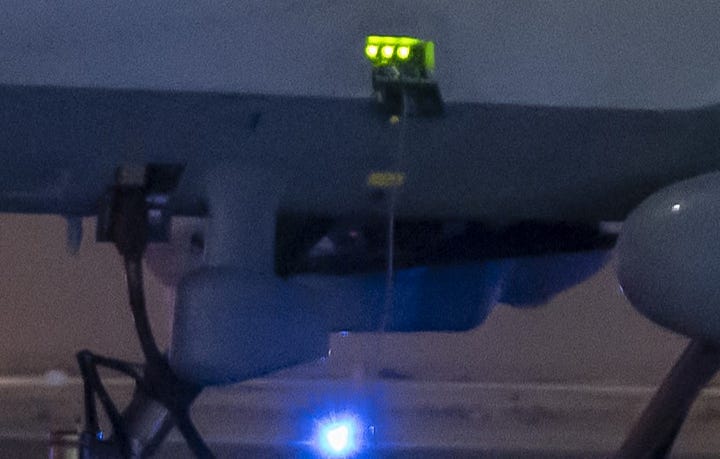


Nice read. Insightful and informative
Insightful post! Thanks for sharing.